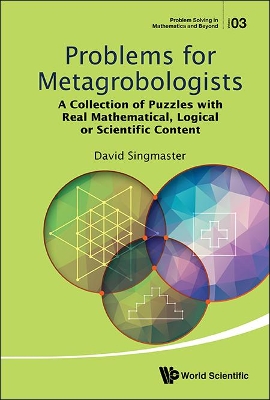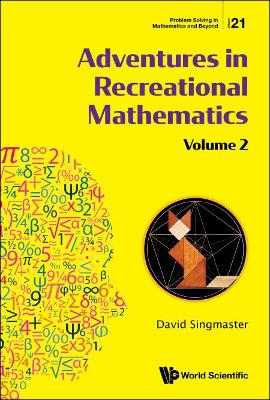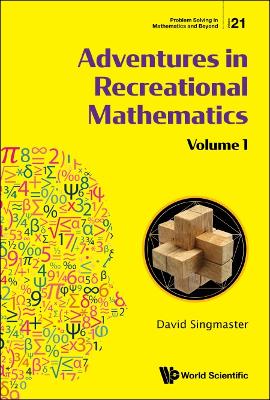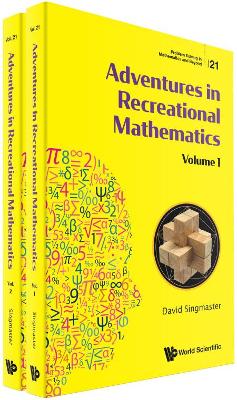Problem Solving in Mathematics and Beyond
4 primary works
Book 3
'The collection contains many delightful and enjoyable problems that are either original or taken from old books, which are no longer easily accessible. I especially like the detailed solutions, which make it clear that the author has carefully re-examined all the old problems and often discovered that the previously published solutions were incomplete. Some problems are best solved with the help of a computer, and can serve as original exercises in computer programming. The book provides an enjoyable read, and should not be missing in the library of any metagrobologist.'zbMATHDefinition of metagrobolize: puzzle, mystify; puzzle out. Hence, metagrobology is the study of puzzles and metagrobologist an expert in such study. David Singmaster is possibly the world's best known metagrobologist. He gained prominence in the 1980s with a booklet on how to solve the Rubik's Cube.This book is a collection of over 200 problems that David Singmaster has composed since 1987. Some of the math problems have appeared in his various puzzle columns for BBC Radio and TV, Canadian Broadcasting, Focus (the UK popular science magazine), Games and Puzzles, the Los Angeles Times, Micromath, the Puzzle a Day memo pad and the Weekend Telegraph. While some of these are already classics, many of the puzzles have not been published elsewhere previously.Puzzle enthusiasts of all ages will find here arithmetic problems, properties of digits; monetary problems; alpha-metics; Diophantine problems; magic figures; sequence problems; logical problems; geometric problems; physics problems; combinatorial problems; geographic problems; calendar problems; clock problems; dissection problems and verbal problems.Can you solve it? Are you smarter than a metagrobologist? Check out Alex Bellos's Monday Puzzle on The Guardian as he features two sequence puzzles from the book.
Book 21
David Singmaster believes in the presentation and teaching of mathematics as recreation. When the Rubik's Cube took off in 1978, based on thinly disguised mathematics, he became seriously interested in mathematical puzzles which would provide mental stimulation for students and professional mathematicians. He has not only published the standard mathematical solution for the Rubik's cube still in use today, but he has also become the de facto scribe and noted chronicler of the recreational mathematics puzzles themselves.Dr Singmaster is also an ongoing lecturer of recreational mathematics around the globe, a noted mechanical puzzle collector, owner of thousands of books related to recreational mathematical puzzles and the 'go to' source for the history of individual mathematical puzzles.This set of two books provides readers with an adventure into previously unknown origins of ancient puzzles, which could be traced back to their Medieval, Chinese, Arabic and Indian sources. The puzzles are fully described, many with illustrations, adding interest to their history and relevance to contemporary mathematical concepts. These are musings of a respected historian of recreational mathematics.
Book 21
David Singmaster believes in the presentation and teaching of mathematics as recreation. When the Rubik's Cube took off in 1978, based on thinly disguised mathematics, he became seriously interested in mathematical puzzles which would provide mental stimulation for students and professional mathematicians. He has not only published the standard mathematical solution for the Rubik's cube still in use today, but he has also become the de facto scribe and noted chronicler of the recreational mathematics puzzles themselves.Dr Singmaster is also an ongoing lecturer of recreational mathematics around the globe, a noted mechanical puzzle collector, owner of thousands of books related to recreational mathematical puzzles and the 'go to' source for the history of individual mathematical puzzles.This set of two books provides readers with an adventure into previously unknown origins of ancient puzzles, which could be traced back to their Medieval, Chinese, Arabic and Indian sources. The puzzles are fully described, many with illustrations, adding interest to their history and relevance to contemporary mathematical concepts. These are musings of a respected historian of recreational mathematics.
Book 21
Adventures In Recreational Mathematics (In 2 Volumes)
by David Singmaster
Published 12 November 2021
David Singmaster believes in the presentation and teaching of mathematics as recreation. When the Rubik's Cube took off in 1978, based on thinly disguised mathematics, he became seriously interested in mathematical puzzles which would provide mental stimulation for students and professional mathematicians. He has not only published the standard mathematical solution for the Rubik's cube still in use today, but he has also become the de facto scribe and noted chronicler of the recreational mathematics puzzles themselves.Dr Singmaster is also an ongoing lecturer of recreational mathematics around the globe, a noted mechanical puzzle collector, owner of thousands of books related to recreational mathematical puzzles and the 'go to' source for the history of individual mathematical puzzles.This set of two books provides readers with an adventure into previously unknown origins of ancient puzzles, which could be traced back to their Medieval, Chinese, Arabic and Indian sources. The puzzles are fully described, many with illustrations, adding interest to their history and relevance to contemporary mathematical concepts. These are musings of a respected historian of recreational mathematics.



